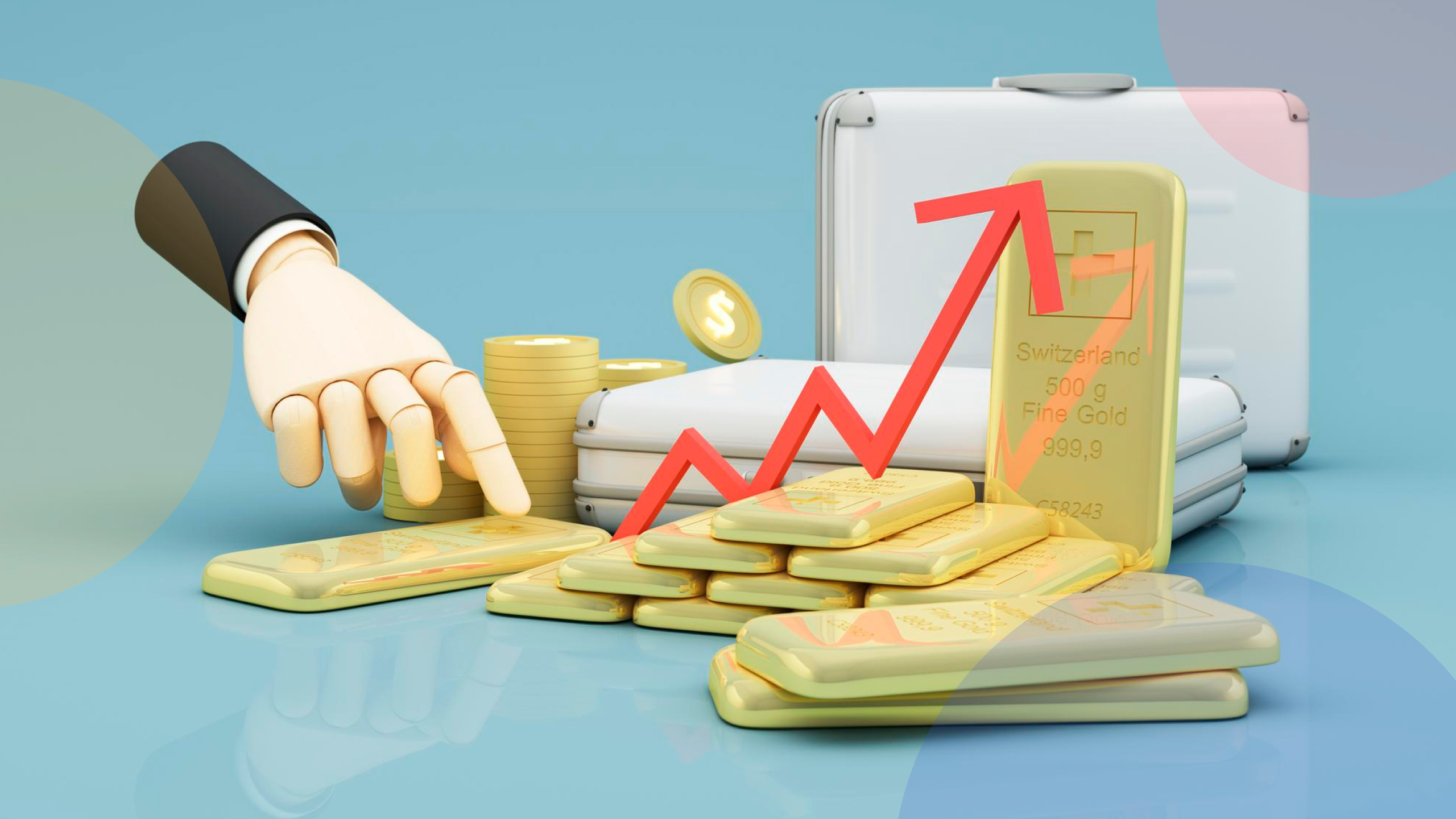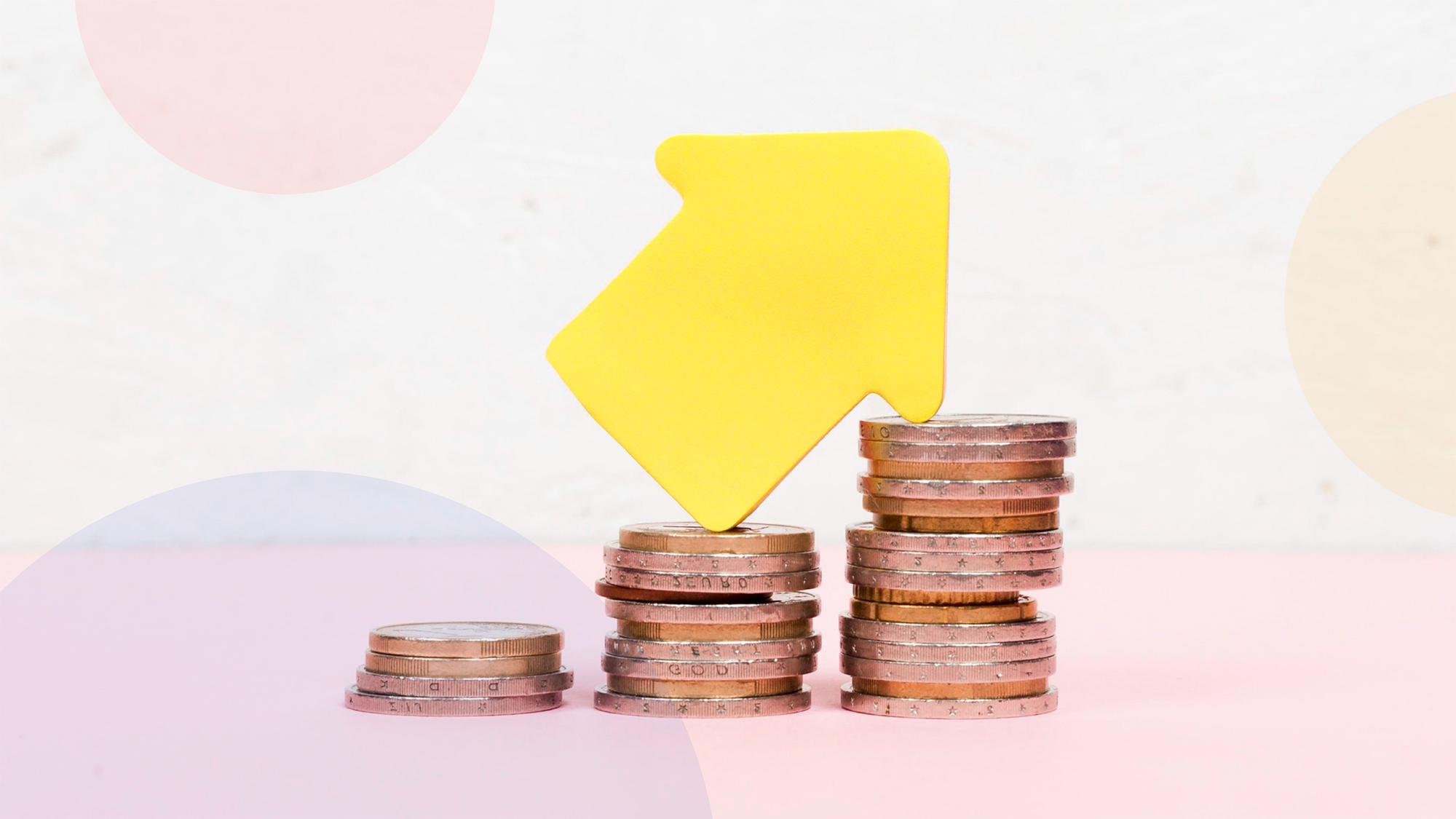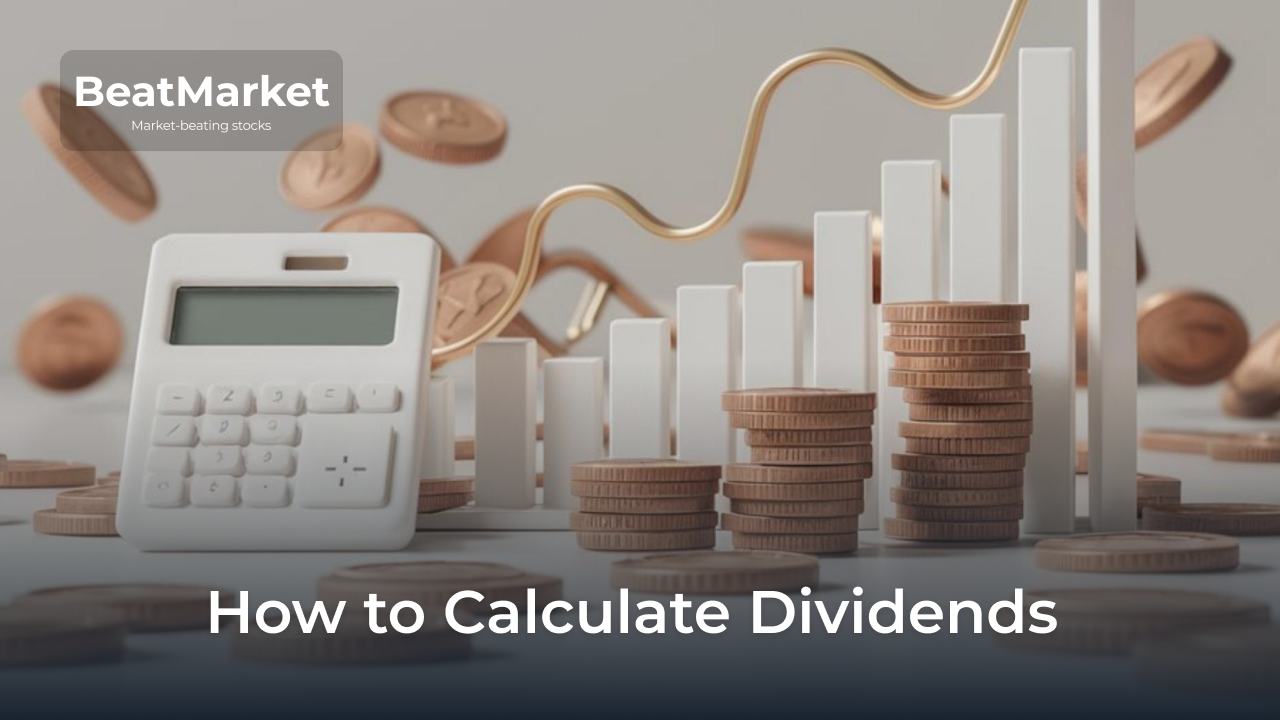One of the popular goals of investing is to create a stable cash flow. We will tell you what investments distribute dividends, how often payments are made, and what return level to expect when buying a particular asset.
All ways of investing money that give a regular income can be categorized:
- bonds;
- savings accounts;
- deposit certificates;
- stocks.
Table of Contents
What are dividends?
Dividends are a part of a publicly traded company’s profits that are distributed to its shareholders. To receive a payment, an investor must buy securities no later than the ex-dividend date. Such an income is taxable in most cases.
Dividends are the profits received by the holders of the stock. Some other investments may pay their owner just as much cash flow. But in this case we are talking about interest income.
Types of investment that distribute dividends and that don’t
Not all investment methods guarantee passive income. Among the companies that may give dividends are:
- large corporations having already gained significant market share;
- small businesses operating in a master limited partnership (MLP) format;
- exchange traded and dividend mutual funds of stocks and bonds;
- real estate investment trusts (REITs);
- unit investment trusts (UITs), etc.
Growth companies (actively developing businesses) usually do not give dividends. Also, investments in precious metals and other assets that do not generate cash flow do not generate passive income.
Let’s break down a few popular instruments and discuss which of these investments may give dividends or interest income.
Short-term certificates of deposit
A certificate of deposit (CD) is a banking product designed to place capital for a fixed period of time at a fixed interest rate. Features of the instrument:
- high profitability compared to other bank accounts;
- flexible terms – a CD can be valid from half a year to 5 years;
- prohibition on early withdrawal – when an investor closes a CD prematurely, they will lose interest for the time the money is in the bank and may be penalized.
Payments on CDs relate to interest income. Most CDs involve accruals at regular intervals. But this money adds up to the body of the deposit. The investor will receive it only after the contract expires.
In 2023, the interest rate on short term CDs exceeds 5% per year. For example, a 6-month CD from Popular Direct yields an APY of 5.35% with a minimum deposit of $10,000.
High-yield savings accounts
A high-yield savings account is a bank account that allows you to manage your money without losing interest or penalties. The amounts deposited in this account are given an interest rate that is much higher than standard savings accounts. Most banks pay interest once a month.
Examples of high-yield savings accounts:
- SoFi – 4.5 per cent interest rate with no minimum balance requirement;
- First Citizens Bank – 5.05% interest per annum, provided that the account will have at least $5,000 on it at all times.
Series I bonds
Series I government bonds are securities that serve as an inflation-protection instrument. The interest paid on them consists of 2 parts:
- fixed income;
- a variable component dependent on the inflation rate.
The rate is recalculated once every six months. For Series I bonds issued from May 2023 to October 2023, the current rate is 4.30%. The interest you get is added to the base cost. Thus there is automatic reinvestment.
These securities, unlike most bonds, are not traded on the stock market. They can be purchased through the TreasuryDirect website.
Short-term corporate bond funds
This category includes exchange traded funds and mutual funds that invest in bonds with a maturity of up to 5 years issued by US corporations. They distribute the coupons received on these securities to their shareholders. These investments may provide with dividends monthly or quarterly depending on the dividend funds.
An example of a bond fund is the Schwab 1-5 Year Corporate Bond ETF (SCHJ ). It has a dividend return of 2.45% over the past 12 months and pays out every month.
Dividend stock funds
This is the most popular type of investment that pays dividends. This category includes ETFs and mutual funds that replicate the Dividend Aristocrats Index, the FTSE Index (the companies with the highest payouts), etc.
The dividends received are distributed quarterly to their shareholders by most investment funds.
Examples of dividend stock funds that pay quarterly:
- Vanguard High Dividend Yield Index Admiral Shares (VHYAX). The mutual fund replicates the FTSE index. The dividend return as of 07.31.2023 is 3.16%.
- Vanguard Dividend Appreciation Index Admiral Shares (VDADX). The mutual fund replicates an index combining Nasdaq-listed companies that have raised their dividends for at least 10 consecutive years. The Y is 1.85%.
- ProShares S&P 500 Dividend Aristocrats. This is an ETF that replicates the Dividend Aristocrats Index. The payout yield is 1.99%.
Value stock funds
Value stocks are stocks that are valued by the market below their “fair” stock price. These are usually large companies that are experiencing temporary difficulties due to external factors.
Value stock funds are mutual and exchange traded funds that replicate an appropriate index, such as SVX or SPXEVUP. Alternatively, value funds are funds that operate under the active strategy with the manager looking for proper stocks.
An example is The Invesco S&P 500 Enhanced Value ETF (SPVU) with an annual dividend return of 2.43% and quarterly payouts.
REIT index funds
REITs are investment funds that make money from real estate or mortgage lending. Their special feature is a commitment to give dividends of at least 90% of profits.
There are index funds with net assets consisting of stocks from multiple REITs. An example is the Vanguard Real Estate ETF. The fund shows a dividend yield of 4.55% and pays out quarterly.
S&P 500 index funds
These are exchange traded and mutual funds that replicate the S&P 500 index. The net assets consist of stocks of the 500 companies included. Not all of them pay out dividends. Therefore, the high dividend yield of such funds is lower than that of those investing in the aristocrat index.
Examples are the Vanguard S&P 500 ETF (VOO) and the SPDR S&P 500 ETF Trust (SPY). Both funds pay shareholders once every 3 months. The annual dividend return is approximately 1.5%.
Nasdaq-100 index funds
This is another instrument of collective stock investment. The net assets of such ETFs and mutual funds contain stocks of 100 companies traded on the Nasdaq exchange.
The most popular ETF that replicates the Nasdaq-100 index is Invesco QQQ Trust (QQQ). The fund’s dividend yield over the past 12 months is 0.58%. Payouts are quarterly.
Most of the securities included in the Nasdaq-100 Index are growth stocks from the technology sector. Investment in funds copying it is a bet on quote growth, not dividend growth.
Rental housing
A rental housing is a property that the owner gives to other people to use for a certain remuneration. Typically, a rental agreement involves payments to be made monthly.
Ownership of rental housing is considered the safest way to generate long-term passive income, but requires a significant initial capital.
… mention other types of assets to invest which give dividends if you know them
Investments also give dividends when invested in individual stocks companies and REITs. The latter have an advantage in terms of the frequency of payments. Among REITs, there are enough funds that distribute profits to shareholders monthly. An example is Realty Income (O), included in the list of dividend aristocrats.
But such investments are considered riskier than buying fund stocks. The reason is that the company may revise its dividend policy, reduce or stop payments.
As a result, its stock prices will fall. And the investor will be forced to stay in a position that no longer generates the required income, or to sell the securities at a loss. Even when a person follows the rules of diversification and has 10-20 companies in the portfolio, it will have a noticeable impact on the total income and the size of the capital.
The net assets of the fund include dozens, sometimes hundreds of companies. If 1-2 of them have problems, this will have a minor impact on the fund’s stock prices and dividends.
3 Examples of Investments that pay dividends annually
When an investor only needs to be paid once a year, they may look at 1-year certificates of deposit or foreign assets, depending on their risk tolerance.
But proper stocks are also available on U.S. exchanges. Below are examples of which investments distribute dividends yearly.
Nexa Resources S.A. (NEXA)
This mining company pays dividends in March. For 2022, the yield on ordinary dividends was 3%.
Stellantis N.V. (STLA)
It is a Dutch car manufacturing company. Its stocks can be bought on the NYSE exchange. The yield of the last payout was 8.33%.
MIND C.T.I. Ltd (MNDO)
It is a global provider of billing and customer service solutions. The stock is traded on the NASDAQ exchange. The yield on the payout made in March 2023 was 10.43%.
3 Examples of Investments that pay dividends quarterly
Previously, we’ve discussed a few asset classes with the most stable payouts possible. Here are examples of which of these investments may provide with dividends on a quarterly basis.
Chicago Atlantic Real Estate Finance, Inc. (REFI)
It is a mortgage REIT that makes money by issuing loans by pledge of securities. This company’s stock has shown a dividend return of 12.14% over the past 12 months.
Spok Holdings, Inc. (SPOK)
The company provides healthcare communications solutions. Its current 12-month dividend return is 8.77%.
Vanguard Dividend Appreciation Index Fund ETF Shares (VIG)
The fund is an ETF fund with a dividend return of 1.9%. It tracks the performance of the S&P U.S. Dividend Growers Index.
3 Examples of Investments that pay dividends monthly
The answer to the question of what investments pay monthly dividends is REIT funds. When an investor doesn’t want to put a strong emphasis on the real estate sector, they can add high-yield savings accounts to their portfolio, which also pay interest every month.
EPR PROPERTIES (EPR)
It is a REIT fund with a well-diversified set of assets. It specializes in leisure oriented properties. The 12-month dividend return is 7.3%.
AGREE REALTY (ADC)
The REIT specializes in retail real estate. The 12-month dividend return is 4.5%.
GLADSTONE COMMERCIAL CORPORATION (GOOD)
The fund’s net assets include industrial and office property. Shareholders can expect a company’s dividend yield of 9.7% per annum.
What Companies Have Paid Dividends the Longest?
Below are 8 companies that have been paying dividends to their shareholders for over 100 years:
- Chubb;
- Coca-Cola;
- Colgate-Palmolive;
- Consolidated Edison;
- Eli Lilly;
- ExxonMobil;
- General Mills;
- Procter & Gamble.
In addition to the duration of the payout, the increasing size of the payout plays an important role. An investor focused on growing passive income may find it useful to look at the list of “dividend kings”. This list includes companies that have increased their payouts for more than 50 consecutive years.
| Company | Ticker | Sector | Dividend yield | Dividend increase streak |
| AMERICAN STATES WATER | AWR | Utilities | 1,95 | 68 |
| DOVER CORPORATION | DOV | Industrials | 1,43 | 67 |
| NORTHWEST NATURAL HOLDING | NWN | Utilities | 4,74 | 67 |
| GENUINE PARTS | GPC | Consumer Goods | 2,43 | 67 |
| PROCTER & GAMBLE | PG | Consumer Goods | 2,41 | 67 |
| PARKER HANNIFIN | PH | Industrials | 1,43 | 67 |
| EMERSON ELECTRIC | EMR | Industrials | 2,17 | 66 |
| 3M | MMM | Industrials | 5,77 | 65 |
| CINCINNATI FINANCIAL | CINF | Financials | 2,79 | 62 |
| COCA-COLA | KO | Consumer Goods | 3,02 | 61 |
The Bottom Line: Key Takeaways
There are many stocks that can generate passive dividend income. They differ in terms of profitability, risk level, minimum amount required, etc.
Before making investment decisions, one should determine one’s investment horizon, risk tolerance and financial objective. All assets listed in this article are provided for illustrative purposes and do not constitute an individual investment recommendation.
FAQ
<H3> How much to make $1,000 a month in dividends?
Investments that distribute dividends monthly are REITs. Based on them, a portfolio with a dividend return of 10% can be created. Then $120k will be enough.
When investing in a diversified portfolio by industry, such as an S&P 500 ETF, a minimum of $800k will be needed.
Do you pay taxes on dividends?
Yes. In general, dividends are taxable income. But there are several exceptions in which an investor may receive a benefit and not pay tax.
Can you live off dividends of $1 million dollars?
It depends on the person’s usual standard of living and what securities the capital is invested in. For many investors, the task will be realistic. It is possible to put together a portfolio with a dividend return of 5% or more annually. Then the size of the payout ratio will be comparable to the average salary of some states. In addition, the return on the capital invested will increase as dividends increase.
What is the highest dividend stock?
Dividends on common stock are not fixed amounts. The amount of high dividends depends on the company’s financial results and may vary from payout to payout. As of August 2023, Chicago Atlantic Real Estate Finance, Inc. (REFI) is considered the leader among the largest companies whose stock is available on U.S. exchanges. The dividend return over the past 12 months is 12.14%.







